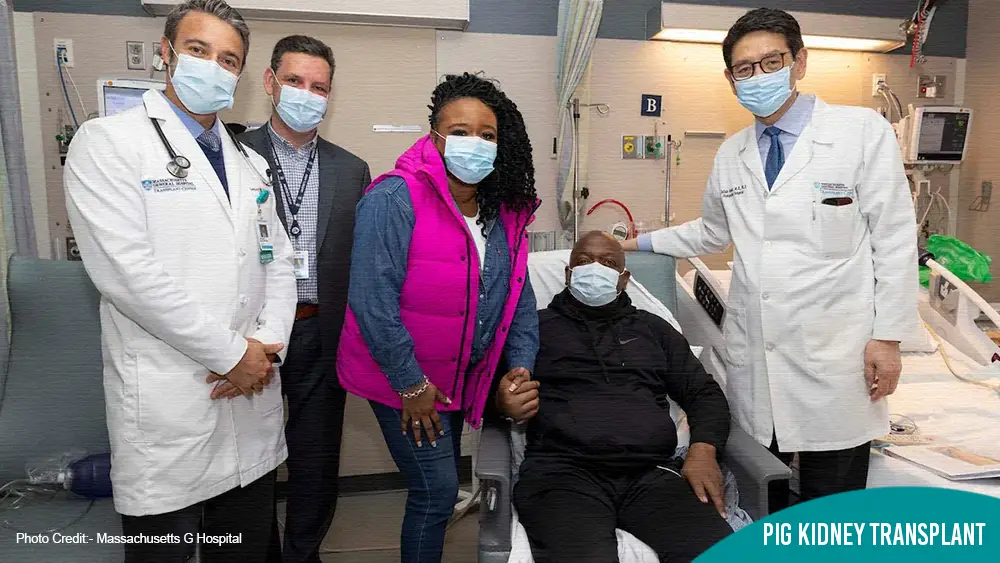
HEALTH NEWS
Norovirus Incubation Time: Understanding the Silent Threat
-
 Rahul Priydarss
Rahul Priydarss - January 27, 2024

T
his article explores the norovirus incubation time, shedding light on the silent threat it poses and offering insights into preventive measures to safeguard public health.
Table of Contents
Introduction:
In the realm of healthcare, staying informed about common viruses and their incubation time is crucial for prevention and control. One such viral menace that frequently makes headlines for its rapid spread and resilience is the norovirus. This article explores the norovirus incubation time, shedding light on the silent threat it poses and offering insights into preventive measures to safeguard public health.
The Norovirus in Brief:
The Norovirus incubation time is a highly contagious virus known for causing gastroenteritis, an inflammation of the stomach and intestines. It is responsible for a significant proportion of foodborne illnesses and outbreaks of acute gastroenteritis worldwide. Norovirus infections often lead to symptoms such as nausea, vomiting, diarrhoea, and stomach cramps. While these symptoms can be debilitating, the real challenge lies in the virus’s ability to survive on surfaces and its low infectious dose, making it easily transmissible from person to person.
Understanding the Norovirus Incubation Time:
The incubation time of a virus refers to the time between exposure to the virus and the appearance of symptoms. In the case of norovirus, the incubation time typically ranges from 12 to 48 hours, with an average of 24 to 48 hours. This short incubation time contributes to the virus’s rapid spread, as individuals may unknowingly be carrying and shedding the virus before they exhibit any symptoms. norovirus incubation time
Silent Threat:
Asymptomatic Carriers and Contagious Surfaces: One of the challenges posed by norovirus is the presence of asymptomatic carriers. Individuals infected with the virus may not show any symptoms but can still shed the virus and infect others. This silent transmission can occur during the entire course of infection, making it challenging to identify and isolate carriers effectively.

Additionally, the virus can persist on surfaces for days or even weeks, depending on the material. Contaminated surfaces, such as doorknobs, countertops, and shared items, become potential sources of infection. This ability to survive outside the human body further complicates efforts to control the spread of the virus, emphasizing the importance of thorough hygiene and sanitation practices.
Basic Key to Breaking the Chain of Transmission:
Given the norovirus’s contagious nature and the potential for silent transmission, preventive measures play a pivotal role in breaking the chain of infection. Here are key strategies to mitigate the risk of norovirus outbreaks:
- Hand Hygiene
- Surface Disinfection
- Isolation and Quarantine
- Food Safety Practices
- Public Health Education
Hand Hygiene: Regular and thorough handwashing is a simple yet effective measure to prevent norovirus transmission. Using soap and water for at least 20 seconds, especially after using the restroom and before handling food, can significantly reduce the risk of contamination.
Surface Disinfection: Proper cleaning and disinfection of surfaces in shared spaces are critical. Norovirus can survive on surfaces for extended period, making it essential to use disinfectants that are effective against the virus. Paying attention to commonly touched surfaces can help curb the spread of the virus.
Isolation and Quarantine: Identifying and isolating symptomatic individuals is crucial to prevent the spread of the virus. Since asymptomatic carriers can also transmit the norovirus, maintaining a high level of vigilance and implementing quarantine measures in outbreak situations is imperative.
Food Safety Practices: Given that norovirus is a common cause of foodborne illness, practising proper food safety is vital. This includes thorough cooking of seafood, avoiding cross-contamination, and ensuring that food handlers adhere to strict hygiene standards.
Public Health Education: Raising awareness about norovirus incubation time, its symptoms, and preventive measures is key to empowering communities to protect themselves. Educational campaigns can promote responsible hygiene practices in both residential and public settings.
Burden of Norovirus Illness in the United States:
Norovirus is the leading cause of vomiting and diarrhoea from acute gastroenteritis (inflammation of the stomach and intestines) among people of all ages in the United States. Most norovirus outbreaks in the United States happen from November to April. In years when there is a new strain of the virus, there can be 50% more norovirus illness.
Impact of Norovirus in the US in one year.
Each year in the United States, norovirus causes on average:
- 900 deaths, mostly among adults aged 65 and older
- 109,000 hospitalizations
- 465,000 emergency department visits, mostly in young children
- 2,270,000 outpatient clinic visits annually, mostly in young children
- 19 to 21 million illnesses
Frequently Asked Questions (FAQs):
A1: The norovirus incubation time is the duration between exposure to the virus and the appearance of symptoms. Typically ranging from 12 to 48 hours, with an average of 24 to 48 hours, this time highlights the time when an individual may transmit the virus before showing any signs of illness.
A2: The norovirus is highly contagious during its incubation period. Infected individuals, including those without symptoms (asymptomatic carriers), can shed the virus, posing a risk to others. This silent transmission underscores the importance of preventive measures to curb the spread.
A3: The short incubation period of the norovirus contributes to its rapid spread. Individuals may unknowingly carry and shed the virus, making it challenging to identify and isolate cases promptly. This characteristic emphasizes the need for proactive measures to break the chain of transmission.
A3: Effective preventive measures include regular handwashing, thorough surface disinfection, isolation of symptomatic individuals, practising food safety, and public health education. Combining these strategies is crucial for minimizing the impact of the norovirus and preventing outbreaks in various settings.

-Remember, Always consult with healthcare professionals or Doctors for personalised advice related to medical conditions.
Conclusion:
The norovirus, with its short incubation period and silent transmission, remains a formidable public health challenge. Understanding the dynamics of the norovirus incubation period is essential for implementing effective preventive measures. Through a combination of robust hygiene practices, surface disinfection, and public health education, communities can work towards breaking the chain of transmission and minimizing the impact of this pervasive and resilient virus. By staying informed and adopting proactive measures, we can collectively mitigate the threat posed by the norovirus and foster a healthier, more resilient society.




